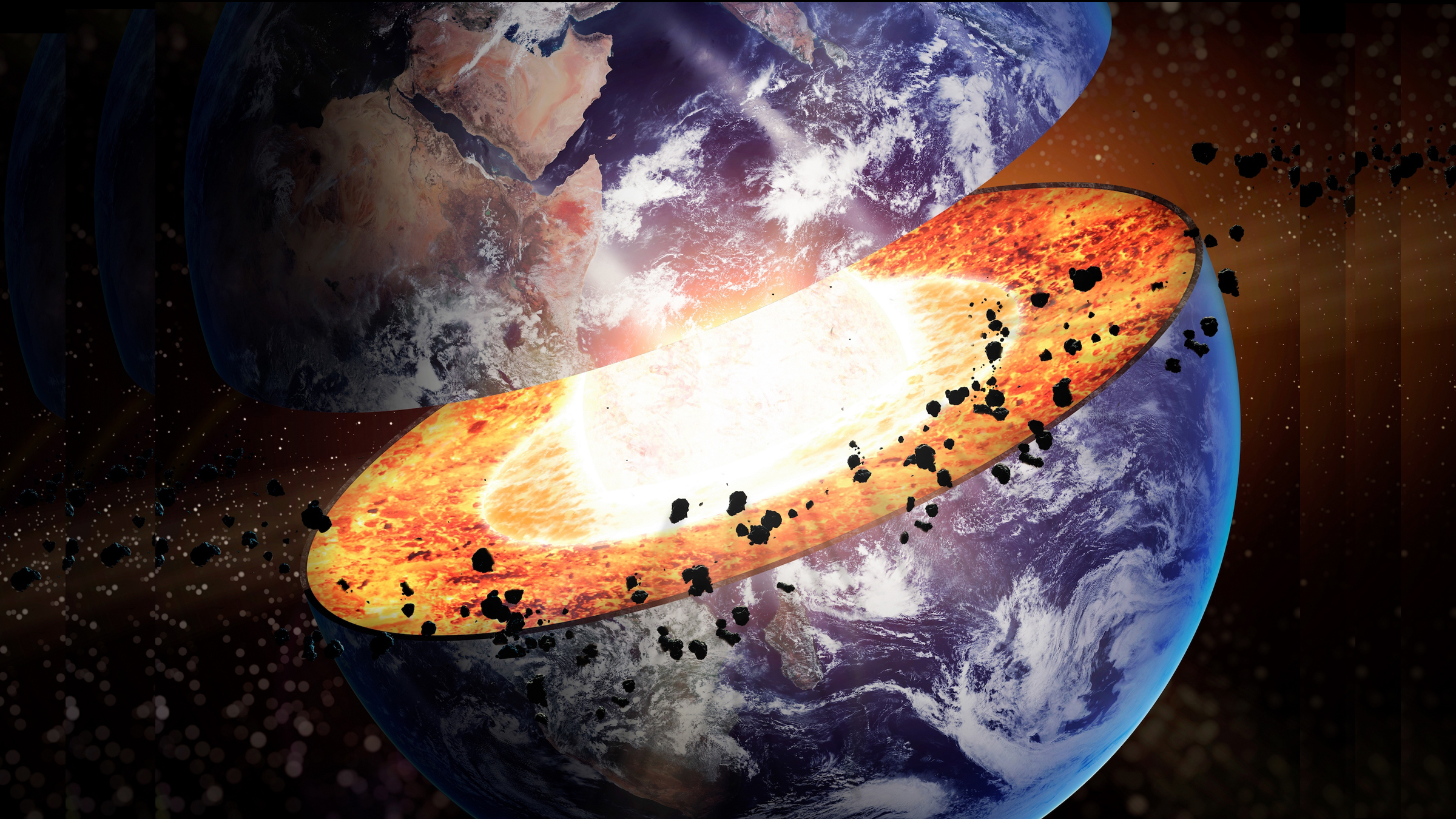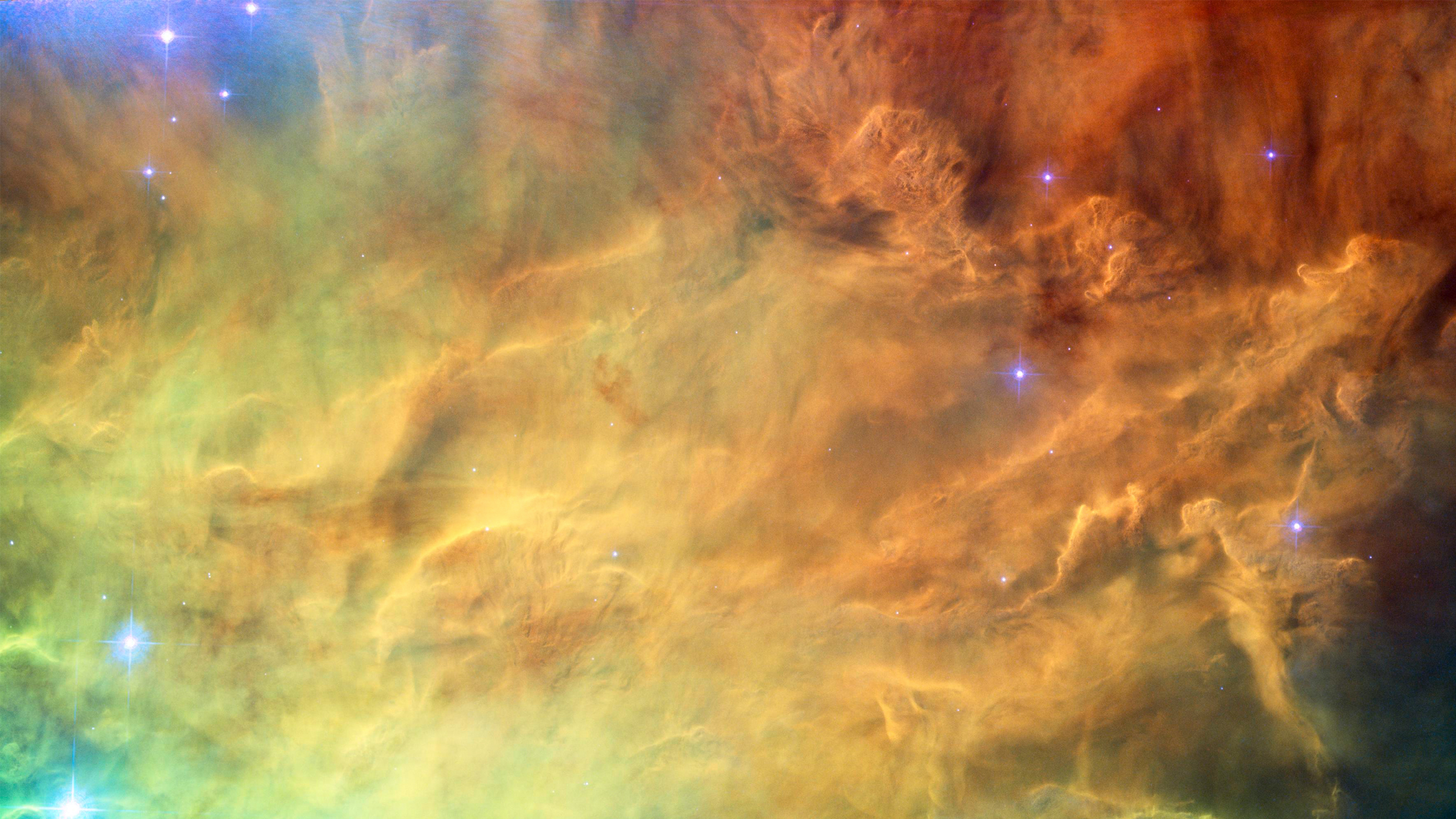Rare primordial gas may be leaking out of Earth's core
This gas was formed in the aftermath of the Big Bang.

An extremely rare type of helium that was created soon after the Big Bang is leaking out of Earth's metallic core, a new modeling study suggests.
The vast majority of this gas in the universe, called helium-3, is primordial and was created just after the Big Bang occurred about 13.8 billion years ago. Some of this helium-3 would have joined other gas and dust particles in the solar nebula — the vast, spinning and collapsed cloud that is thought to have led to the creation of the solar system.
The discovery that Earth's core likely contains a vast reservoir of helium-3 is further evidence to support the idea that Earth formed inside a thriving solar nebula, not on its periphery or during its waning phase, the researchers said.
Helium-3 is "a wonder of nature, and a clue for the history of the Earth, that there's still a significant amount of this isotope in the interior of the Earth," study lead author Peter Olson, a geophysicist at the University of New Mexico, said in a statement.
Related: Why do the planets in the solar system orbit on the same plane?
Helium-3 is an isotope, or variant, of helium that has one neutron instead of the usual two in its nucleus. It's a rare gas, making up just 0.0001% of helium on Earth. It comes from various processes, such as the radioactive decay of tritium, a rare radioactive isotope of hydrogen. But because helium is one of the earliest elements to exist in the universe, most helium-3 likely came from the Big Bang.
Scientists already knew that about 4.4 pounds (2 kilograms) of helium-3 escapes from Earth's interior annually, mostly along the mid-ocean ridge system where tectonic plates meet, the researchers wrote in the study, published online March 28 in the journal Geochemistry, Geophysics, Geosystems.
Get the world’s most fascinating discoveries delivered straight to your inbox.
This is "about enough to fill a balloon the size of your desk," Olson said.
But scientists weren't sure exactly how much of the helium-3 came from the core versus the mantle, and how much helium-3 was in Earth's reservoirs.
To investigate, the research team modeled helium abundance during two important phases of Earth's history: the planet's early formation, when it was still accumulating helium, and after the formation of the moon, when our planet lost a lot of this gas. Scientists think that the moon formed when a colossal object about the size of Mars collided with Earth about 4 billion years ago.
This event would have melted Earth's crust and enabled much of the helium inside our planet to escape.
However, Earth didn't lose all of its helium-3 at that time. It still retains some of the rare gas, which continues to seep out of Earth's innards. The core would be a good place for such a reservoir, "because it is less vulnerable to large impacts compared to other parts of the Earth system," the researchers wrote in the study, and it is not involved in tectonic plate cycling, which also releases helium gas.
The researchers coupled the modern helium-3 leak rate with models of helium isotope behavior. These calculations revealed that between 22 billion pounds (10 teragrams) to 2 trillion pounds (1 pentagram) of helium-3 are hanging out in Earth's core — an enormous amount, indicating that Earth formed in a solar nebula with high concentrations of the gas.
Their models of gas exchange "exchange during Earth's formation and evolution implicate the metallic core as a leaky reservoir that supplies the rest of the Earth with helium-3," the researchers wrote in the study.
However, because these results are based on modeling, the results aren't ironclad. The team had to make a number of assumptions — for example that Earth took on helium-3 as it formed in the solar nebula, that helium entered into core-forming metals and that some helium left the core for the mantle. These assumptions, in addition to other uncertainties, including how long the solar nebula lasted relative to the rate at which Earth formed, mean that there may be less helium-3 in the core than they calculated, the scientists said.
But the researchers hope to find more clues that support their findings. For instance, finding other nebula-created gases, such as hydrogen, that are leaking from Earth from similar spots and at similar rates as helium-3, could be a "smoking gun" showing that the core is the source, Olson said. "There are many more mysteries than certainties."
Originally published on Live Science.

Laura is the managing editor at Live Science. She also runs the archaeology section and the Life's Little Mysteries series. Her work has appeared in The New York Times, Scholastic, Popular Science and Spectrum, a site on autism research. She has won multiple awards from the Society of Professional Journalists and the Washington Newspaper Publishers Association for her reporting at a weekly newspaper near Seattle. Laura holds a bachelor's degree in English literature and psychology from Washington University in St. Louis and a master's degree in science writing from NYU.



